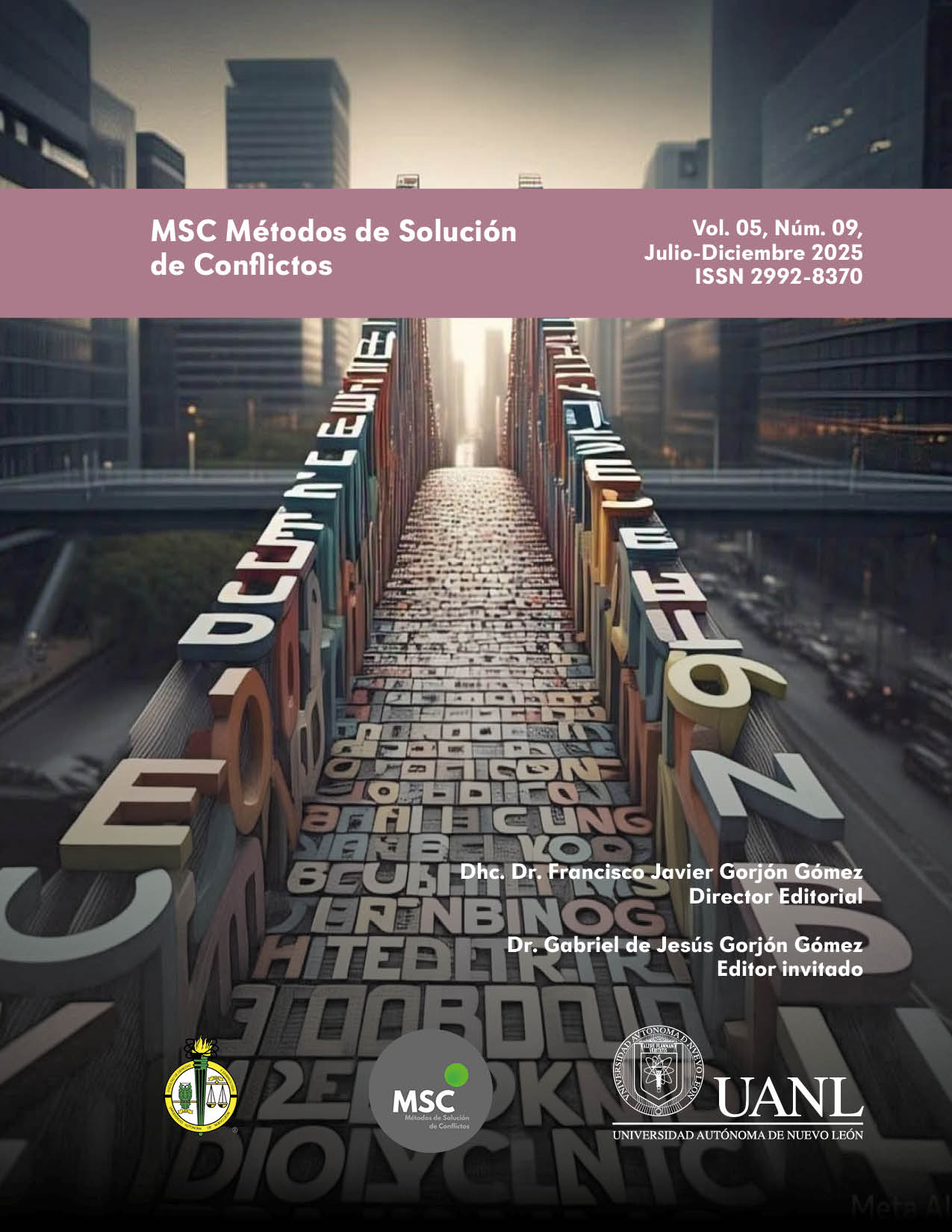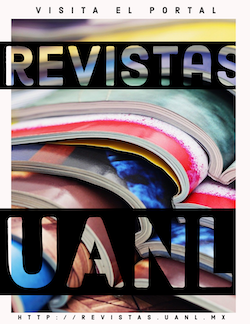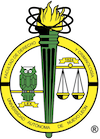Education for Peace in the Digital Age
ADR as an Educational Tool for 21st-Century Citizenship
DOI:
https://doi.org/10.29105/msc5.9-123Keywords:
Digital citizenship, Alternative Dispute Resolution, education for peace, citizenship training, Conflict ResolutionAbstract
The digital era presents new challenges for peaceful coexistence, driving the need to educate citizens capable of resolving conflicts collaboratively in both physical and virtual environments. This article analyzes the role of Alternative Dispute Resolution Methods (ADR) as key educational tools to promote responsible digital citizenship in the 21st century. Based on a documentary review and critical analysis, it explores the necessary competencies for peaceful conflict resolution in the digital sphere, the importance of integrating ADR into educational programs, and the benefits of their implementation in citizenship training. Examples of good practices are presented, and methodological and pedagogical challenges for effective application are discussed. Finally, recommendations are proposed to strengthen a culture of peace in digital education through the use of ADR.
Downloads
References
Bonafé-Schmitt, J. P. (2000). La mediación: una estrategia de resolución de conflictos en la escuela. Narcea Ediciones.
Bickmore, K. (2005). Reconciliation, civic education, and the Canadian curriculum: Education for a shared future? In M. Benton & R. G. Shapiro (Eds.), Teaching for peace and human rights: Citizenship and civic education in a global age (pp. 111–128). University of Toronto Press.
Buckingham, D. (2007). Digital media literacies: Rethinking media education in the age of the Internet. Research in Comparative and International Education, 2(1), 43–55.
Castells, M. (2006). La sociedad red. Alianza Editorial.
De Zubiría, J. (2011). Formar para la ciudadanía: Un desafío pedagógico. Fundación Alberto Merani.
Delors, J. (1996). La educación encierra un tesoro. UNESCO.
Fraser, N. (2008). Escalas de justicia: repensar la justicia en un mundo globalizado. Herder.
Goleman, D. (2006). Emotional intelligence. Bantam Books.
James, C., Davis, K., Flores, A., Francis, J. M., Pettingill, L., Rundle, M., & Gardner, H. (2010). Young people, ethics, and the new digital media: A synthesis from the GoodPlay Project. MIT Press.
Jenkins, H., Purushotma, R., Weigel, M., Clinton, K., & Robison, A. J. (2009). Confronting the challenges of participatory culture: Media education for the 21st century. MIT Press.
Johnson, D. W., & Johnson, R. T. (2005). Creative conflict resolution: More than one way to skin a cat. In D. W. Johnson & R. T. Johnson (Eds.), Joining Together: Group Theory and Group Skills (9th ed., pp. 275–300). Pearson Education.
Lederach, J. P. (1995). Construcción de paz: Desarrollo, violencia y conflicto. Ediciones Abya-Yala.
López de la Llave, A., & Martín González, M. (2015). La mediación en entornos digitales: una nueva competencia educativa. Revista de Mediación, 8(2), 45–59.
Livingstone, S., & Helsper, E. J. (2007). Gradations in digital inclusion: Children, young people and the digital divide. New Media & Society, 9(4), 671-696.
OCDE (2018). The future of education and skills: Education 2030. OECD Publishing.
López de la Llave, A. (2005). Mediación educativa: Teoría y práctica en contextos escolares. Narcea Ediciones.
Ortega-Ruiz, R., & Del Rey, R. (2016). Convivencia escolar y prevención del acoso escolar en la era digital. Revista Interuniversitaria de Formación del Profesorado, 86(30.3), 15–30.
OCDE. (2018). The future of education and skills: Education 2030. OECD Publishing.
Rest, J. R. (1986). Moral development: Advances in research and theory. Praeger Publishers.
Rheingold, H. (2012). Net smart: How to thrive online. MIT Press.
Ribble, M. (2012). Digital citizenship in schools: Nine elements all students should know. ISTE.
Ribble, M. (2012). Digital citizenship in schools: Nine elements all students should know (2nd ed.). ISTE.
Rosenberg, M. B. (2003). Nonviolent communication: A language of life. PuddleDancer Press.
Sánchez Rojo, D. (2020). La mediación en el entorno digital: retos y posibilidades. Revista de Educación para la Paz, 15(2), 45-61.
UNESCO (2016). Educación para la ciudadanía mundial: Temas y objetivos de aprendizaje.
Sentís, C. (2020). La mediación como estrategia de inclusión: desafíos en contextos educativos digitales. Revista de Educación Inclusiva, 13(1), 97–115.
Tapia, M. (2020). Aprendizaje-servicio digital: ciudadanía activa en tiempos de virtualidad. Revista Latinoamericana de Estudios Educativos, 50(2), 89–106.
UNESCO. (2021). Marco de competencias digitales para docentes. París: Organización de las Naciones Unidas para la Educación, la Ciencia y la Cultura.
UNESCO. (2016). Educación para la ciudadanía mundial: Temas y objetivos de aprendizaje. UNESCO.
Zehr, H. (2002). El pequeño libro de la justicia restaurativa. Editorial Sal Terrae.
Downloads
Published
How to Cite
Issue
Section
License
Copyright (c) 2025 Rosaura Rojas Monedero

This work is licensed under a Creative Commons Attribution-NonCommercial 4.0 International License.
Los autores/as que publiquen en esta revista aceptan las siguientes condiciones:
a. Los autores/as conservarán sus derechos de autor y garantizarán a la revista el derecho de primera publicación de su obra, el cual estará simultáneamente sujeto a la Licencia Creative Commons Atribución-NoComercial 4.0 Internacional. que permite a terceros compartir la obra siempre que se indique su autor y su primera publicación esta revista.
b. Los autores/as pueden realizar otros acuerdos contractuales independientes y adicionales para la distribución no exclusiva de la versión del artículo publicado en esta revista (p. ej., incluirlo en un repositorio institucional o publicarlo en un libro) siempre que indiquen claramente que el trabajo se publicó por primera vez en MSC Métodos de Solución de Conflictos.
c. Se permite y recomienda a los autores/as a publicar su trabajo en Internet (por ejemplo en páginas institucionales o personales) posterior al proceso de revisión y publicación, ya que puede conducir a intercambios productivos y a una mayor y más rápida difusión del trabajo publicado (Véase El efecto del acceso abierto).







 MSC Métodos de Solución de Conflictos Vol. 5 Núm. 9, Julio-Diciembre 2025, es una publicación semestral editada por la Universidad Autónoma de Nuevo León, a través de la Facultad de Derecho y Criminología. Dirección de la publicación: Av. Universidad s/n Cd. Universitaria C.P. 66455, San Nicolás de los Garza, Nuevo León, México. revistamsc.uanl.mx, revistamsc@uanl.mx. Editor responsable: Dr. Francisco Javier Gorjón Gómez. Reserva de Derechos al Uso Exclusivo núm. 04-2023-110310161600-102 ISSN 2992-8370, ambos otorgados por el Instituto Nacional del Derecho de Autor. Responsable de la última actualización: Dr. Paris Alejandro Cabello Tijerina, Facultad de Derecho y Criminología Av. Universidad s/n Cd. Universitaria C.P. 66451, San Nicolás de los Garza, Nuevo León, México. Fecha de la última modificación: 28 de julio de 2025.
MSC Métodos de Solución de Conflictos Vol. 5 Núm. 9, Julio-Diciembre 2025, es una publicación semestral editada por la Universidad Autónoma de Nuevo León, a través de la Facultad de Derecho y Criminología. Dirección de la publicación: Av. Universidad s/n Cd. Universitaria C.P. 66455, San Nicolás de los Garza, Nuevo León, México. revistamsc.uanl.mx, revistamsc@uanl.mx. Editor responsable: Dr. Francisco Javier Gorjón Gómez. Reserva de Derechos al Uso Exclusivo núm. 04-2023-110310161600-102 ISSN 2992-8370, ambos otorgados por el Instituto Nacional del Derecho de Autor. Responsable de la última actualización: Dr. Paris Alejandro Cabello Tijerina, Facultad de Derecho y Criminología Av. Universidad s/n Cd. Universitaria C.P. 66451, San Nicolás de los Garza, Nuevo León, México. Fecha de la última modificación: 28 de julio de 2025.